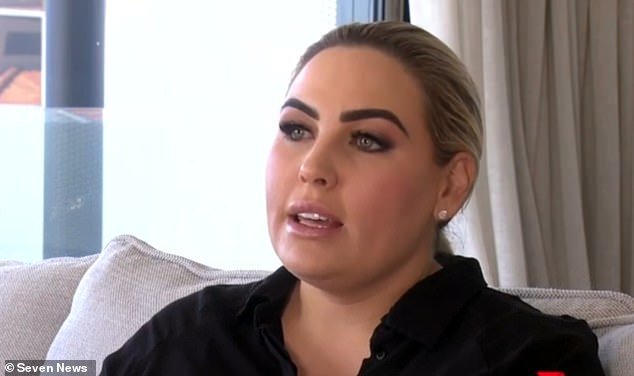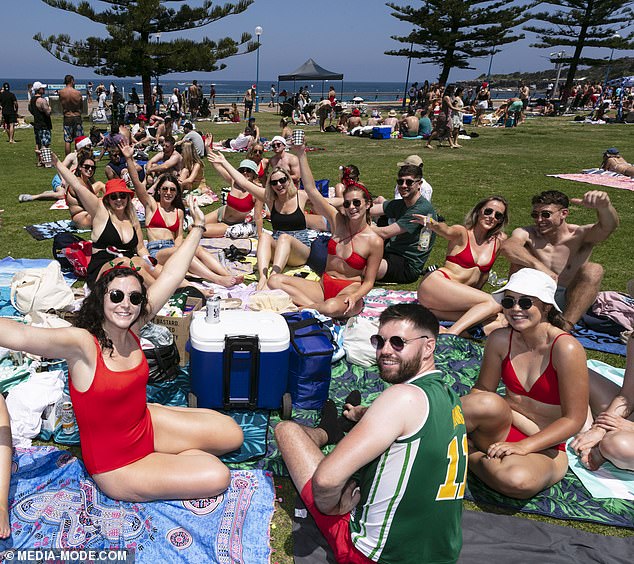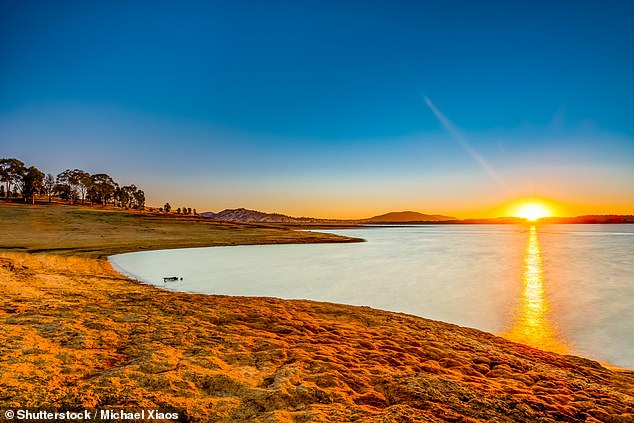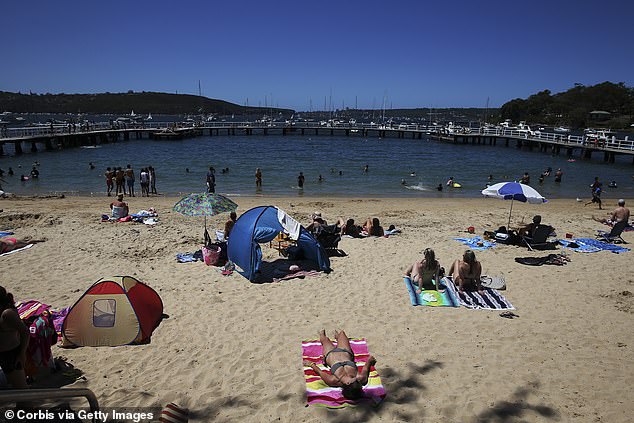Cancer Council warning after Perth mother showed son’s severe reaction to sunscreen
>
Warning after a mother posted dramatic photos of her three-year-old son’s severe reaction to a popular sunscreen
- A mother said her young son’s skin broke out in red spots due to sunscreen
- Carmen McNamara said her three-year-old son was “out of it”
- An image of the Perth boy showed his red, bumpy and ‘itchy’ cheek
A three-year-old boy received the shock of his life when his face blistered after an allergic reaction to sunscreen.
Perth’s mother, Carmen McNamara, said her son’s face was covered in “swollen, red and very itchy” spots after a common brand of sun cream was applied to him.
Pictures of the boy showed his face swollen with bright red spots resembling a “proper chemical burn.”
Images of the boy showed his face with bright red spots that looked like severe burn marks (pictured)

Perth’s mother, Carmen McNamara (pictured), said her son’s face broke out in “swollen, red and very itchy” patches after sunscreen was applied.

One percent of sunscreen users will have a bad reaction to the product (pictured, revelers at Coogee Beach on Australia Day)
Ms McNamara said her son was “out of it” after his face became swollen after using the well-known brand of sunscreen.
One nasty blemish in particular covered most of his right cheek.
“(Her skin) was raised, bumpy, red, very itchy, like a proper chemical burn,” he said. 7News.
Sally Blane, of the Cancer Council, said that one per cent of users will have a bad reaction to sunscreen.

“Sunscreen is not armor, it never gives 100 percent protection,” said Sally Blane of the Cancer Council.
“Sunscreen is not armor, it never gives 100 per cent protection,” said Ms Blane.
The Council recommended that Australians use other forms of sun protection in addition to sun cream.
The advice included wearing a hat, shirt, and sunglasses, as well as sunscreen, but also seeking shade.
Children under six months should not use sunscreen and should be kept out of the sun.
Bad reactions to sunscreen are rare and stem from an allergic reaction to an ingredient in the cream, according to a report from the Cancer Council.
Some people may react to a fragrance, preservative, UV absorber, or other component of sunscreen.

The Cancer Council recommended Australians use other forms of sun protection in addition to sun cream (Lake Hume near Albury in NSW pictured)

Australians are advised to wear a hat, shirt, sunglasses and sunscreen, but also seek shade (pictured, sunbathers at Balmoral Beach in Sydney)
It comes as public health research revealed that two in three Australians will get skin cancer in their lives.
“More than two-thirds of Australians will be treated for the most common skin cancers in their lifetime,” the 2022 report said.
‘rates [have increased] up to six percent a year for the last three decades.’
